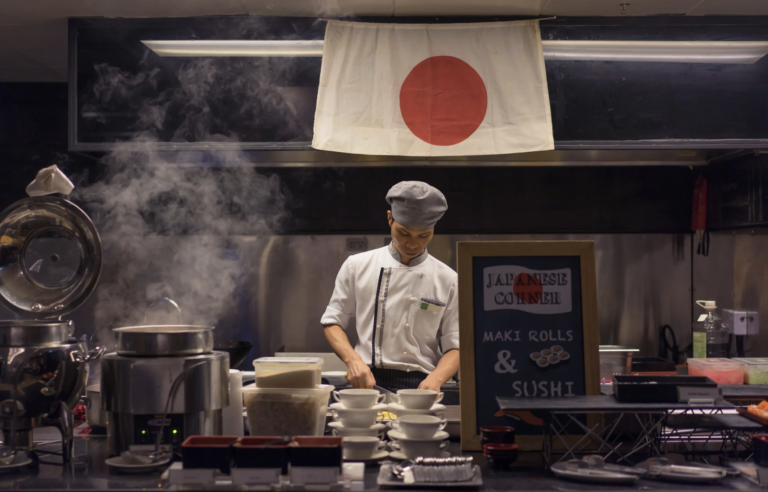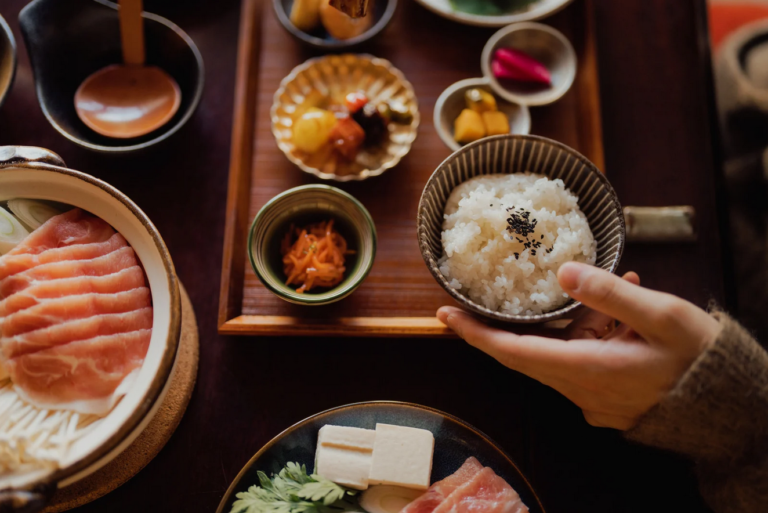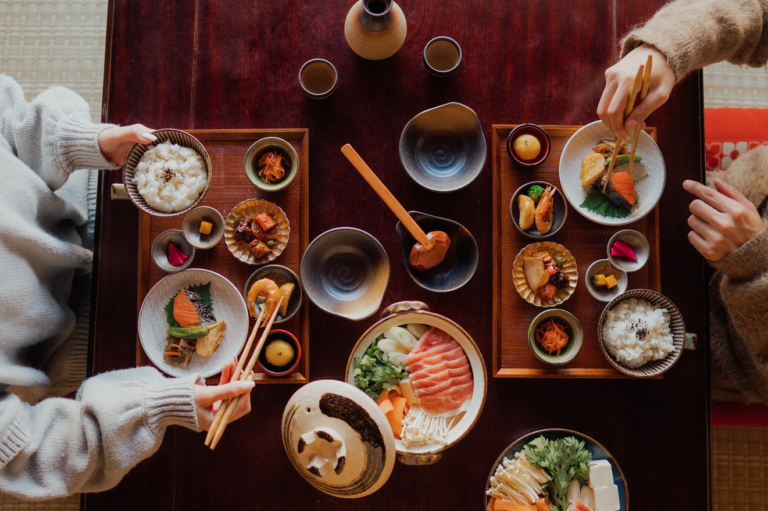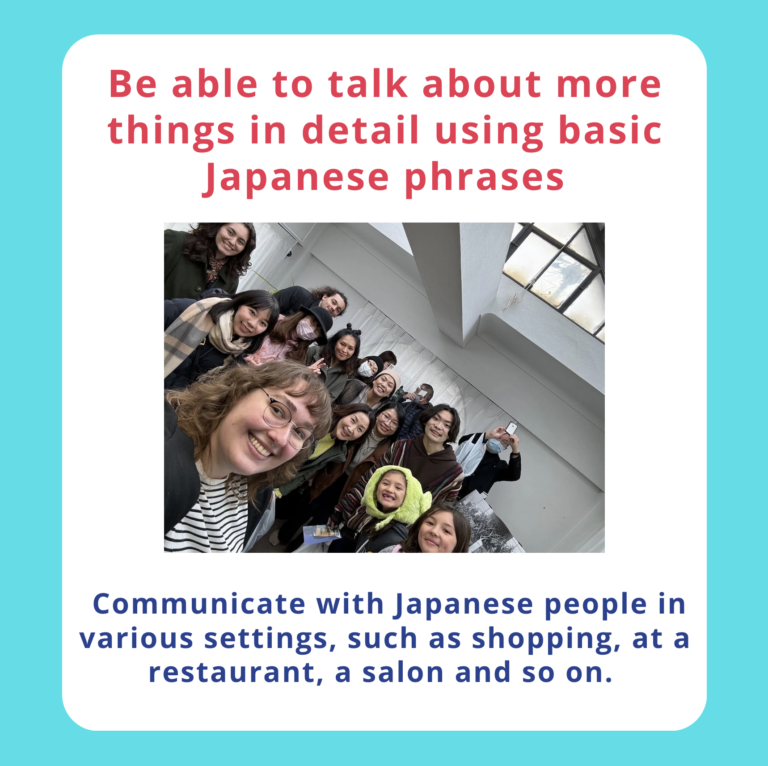
Dining in Japan is more than just enjoying a meal—it’s a reflection of deep-rooted cultural values such as respect, harmony, and gratitude. From the way food is served to how chopsticks are handled, every detail holds significance. Whether you’re eating at a casual ramen shop or attending a formal kaiseki dinner, understanding proper Japanese dining etiquette can help you navigate Japanese social settings with ease. While some rules are universal, others become more refined as your familiarity with Japanese customs grows.
In this blog, we’ll break down Japanese dining etiquette into three levels: beginner, intermediate, and advanced. If you’re new to Japanese culture, we’ll cover the essential do’s and don’ts to help you avoid common mistakes. If you’re already familiar with basic manners, we’ll explore more nuanced customs that elevate your dining experience. And for those aiming to master formal dining settings, we’ll introduce the finer details that showcase deep cultural understanding. Let’s dive in and refine your dining skills, one level at a time!
At 虎ノ門ランゲージスクール, we believe that language and culture go hand in hand. Our 1-month intensive Japanese course is designed to not only teach the language but also provide the cultural context behind it—so you can speak naturally and engage with Japan beyond the textbook. Whether you’re here short-term or planning to stay long-term, mastering both the language and customs will help you feel more connected and confident in your daily interactions.
Why is Dining Etiquette So Important in Japan?
Japanese dining etiquette is deeply rooted in the country’s cultural values of respect, harmony, and mindfulness. Meals are not just about eating—they are a way to show appreciation for the food, the people who prepared it, and those sharing the table. Simple gestures like saying “itadakimasu” before eating and “gochisousama deshita” after finishing reflect gratitude and are considered essential manners. Many of these customs stem from historical and religious influences, such as Shinto and Buddhist traditions, which emphasize respect for nature, cleanliness, and mindfulness in daily life—including meals.
Unlike in many Western cultures, where dining habits may be more flexible, Japanese dining etiquette follows specific customs that help maintain harmony at the table. Proper chopstick use, the way you pour drinks for others, and even how you interact with tableware all contribute to a respectful dining experience. By understanding these traditions, you not only avoid cultural missteps but also gain a deeper appreciation for Japan’s rich heritage. Whether you’re a traveler, a new resident, or someone aiming for fluency in both language and culture, learning these dining customs will enhance your experience and help you engage more naturally in Japanese social settings.
Do’s and Don’ts for Beginners
If you’re new to Japanese dining etiquette, mastering these basic rules will help you enjoy meals respectfully and avoid common mistakes.
- Don’t stick your chopsticks into rice – This resembles a funeral ritual where incense sticks are placed upright in sand. Instead, rest your chopsticks on the provided holder or across your bowl.
- Do say itadakimasu before eating – This phrase means “I humbly receive” and is a way to show gratitude for the meal, a fundamental part of Japanese culture.
- Don’t pass food from chopstick to chopstick – This mimics a funeral custom where bones are transferred this way during cremation ceremonies. Instead, place food directly onto a plate for others to pick up.
- Do use both hands when receiving or giving something – Whether handing over a dish, pouring a drink, or accepting a plate, using both hands shows politeness and respect.
- Don’t pour your own drink – In Japan, it’s customary to pour drinks for others, and they will return the favor. If you see someone’s glass empty, offer to refill it as a sign of good manners.
- Do slurp your noodles – Unlike in Western cultures, slurping is a sign of enjoyment and is completely acceptable when eating ramen, udon, or soba.
- Don’t place chopsticks across the bowl – Leaving chopsticks resting on top of a bowl is considered bad manners. Instead, use a chopstick rest or place them neatly on the side of your plate.
By following these beginner-friendly tips, you’ll feel more confident dining in Japan while showing respect for its customs. As you become more comfortable, you can start incorporating more refined etiquette into your meals.
Do’s and Don’ts for Intermediate Learners

Once you’ve mastered the basics of Japanese dining etiquette, it’s time to refine your skills with these intermediate-level customs. These small details will help you blend in more naturally at Japanese dining tables.
- Do say “gochisousama deshita” after finishing your meal – This phrase expresses gratitude to the chef and those who prepared the meal, showing appreciation for the food and effort put into it.
- Don’t start eating until everyone has been served – It’s polite to wait until all diners have their food before beginning, especially in group settings. If dining with elders, wait for them to start first.
- Do hold your rice bowl while eating – Lifting the rice bowl closer to your mouth is considered proper etiquette, as it prevents spilling and shows refinement. However, don’t do this with larger bowls like ramen.
- Don’t pour soy sauce directly onto rice – Unlike in some cultures, plain white rice is meant to be eaten as is. Instead, dip your side dishes into soy sauce as needed.
- Do use the opposite end of chopsticks when taking food from a shared plate – When dining family-style, it’s good manners to use the back end of your chopsticks or serving utensils to take food, rather than the part that touches your mouth.
- Don’t bite directly into shared food – If an item is too big to eat in one bite, break it apart with chopsticks instead of biting into it and putting the rest back.
- Do align your chopsticks neatly when finished – Placing chopsticks parallel on the chopstick rest or across an empty plate signals that you are done with your meal in a tidy and respectful way.
Mastering these intermediate-level dining manners will help you feel more at ease in social settings and demonstrate a deeper understanding of Japanese culture. Ready to take your skills to the next level? Let’s move on to advanced etiquette!
Do’s and Don’ts for Advanced Learners

For those who want to demonstrate a deep understanding of Japanese dining etiquette, mastering these advanced-level customs will set you apart as someone truly familiar with Japan’s dining culture.
- Do subtly pace your eating to match others – Eating too fast or too slow can disrupt the harmony of a meal, especially in formal dining settings. Try to keep pace with the group.
- Don’t raise your glass higher than someone senior to you – When clinking glasses in a toast, it’s polite to position your glass slightly lower than that of a senior or superior to show respect.
- Do fold your oshibori (wet towel) neatly after use – After wiping your hands, fold the towel and place it back on the tray rather than leaving it crumpled.
- Don’t completely finish your drink if you don’t want a refill – If you empty your glass, it signals to your host that you’d like more. Leave a small amount if you don’t want another pour.
- Do eat everything on your plate – Finishing all the food served to you shows appreciation and reduces waste. Leaving just a little food can imply you didn’t enjoy the meal.
- Don’t mix wasabi directly into soy sauce – In high-end sushi restaurants, this is considered improper. Instead, place a small amount of wasabi on the sushi itself before dipping it lightly into the soy sauce.
- Do fold your oshibori (wet towel) neatly after use – After wiping your hands, fold the towel and place it back on the tray rather than leaving it crumpled.
- Chopstick Etiquette (Don’ts):
- 寄せ箸 (Yose-bashi): pulling a dish closer with your chopsticks.
- 迷い箸 (Mayoi-bashi): hovering your chopsticks over various dishes while deciding what to eat.
- 逆さ箸 (Sakasa-bashi): turning the chopsticks upside down when sharing food.
By incorporating these advanced etiquette rules, you’ll be able to navigate even the most formal dining situations with confidence. Whether you’re dining with colleagues, clients, or friends, these refined manners will leave a lasting positive impression.
Additional Tips
- Place the lids of bowls on the right side with the inner side facing up while eating, put the lid back on when finished.
- When eating sashimi (お造り), avoid mixing wasabi into soy sauce. Instead, put a small amount of wasabi on the sashimi and then dip it in soy sauce.
- For grilled fish served whole (尾頭付きの焼魚), after eating the top layer of meat, do not flip the fish over. Instead, use the chopsticks to lift the bones and access the bottom layer of meat.
Final Thoughts: Mastering Japanese Dining Etiquette
Mastering Japanese dining etiquette is more than just following rules—it’s a way to show respect for the culture, the food, and the people you’re dining with. From beginner-friendly customs like avoiding chopstick taboos to advanced etiquette observed in formal dining settings, each level adds depth to your understanding of Japan’s unique traditions. By practicing these manners, you’ll not only enhance your dining experiences but also demonstrate cultural awareness and appreciation, whether at casual meals with friends or high-end business dinners.

If you’re eager to refine your Japanese language skills alongside cultural etiquette, 虎ノ門ランゲージスクール offers immersive courses that help you navigate real-life situations with confidence. Our 1-month intensive Japanese course provides the perfect opportunity to deepen your understanding of both language and culture. Join us and take your learning beyond the classroom—because mastering Japanese isn’t just about speaking; it’s about truly experiencing the culture! Receive 16,500yen off your registration fee if you book a free consulation! Get a peek into how our lessons go with a mini demo lesson and learn more about which programs may suit you best. Check out our programs today!
虎ノ門ランゲージスクール
We have been helping tourists and expats living in Tokyo for years, including embassies and international corporate people and their families For adults above intermediate level eager to become bilingual and master Japanese, explore our most comprehensive 1-Month level-up Intensive Japanese courses, four days a week. Or our time and cost-efficient 2days/week “Speak-Up” Course” if you like more light-weight and conversation-focused course. You can join us in a motivating and comfortable environment where we prioritize practical application over boring old lesson styles. This course will not only help you learn how to speak confidently with essential grammar and vocab, but also with deep understanding in Japanese customs and culture. Moreover, we also give you opportunities to participate in networking events, “Walk and Learn” and other workshops, connecting with others who share your interests. We also have our renowned 4-months or 3-months JLPT Prep Course so you can ace your goal this time! We have the best teachers who can finally explain all your unsolved questions regarding grammar, kanji, or vocab, do exercises until you are confident, and efficiently learn reading comprehension and listening through mock test format.
For those who prefer personalized attention, we offer adult private Japanese classes for all levels. Whether you’re a beginner, intermediate, or advanced learner, we provide 100% customized, flexible, high-quality courses tailored to your specific needs to accelerate your learning. Our purpose-oriented approach ensures fast learning, whether you’re interested in industry-specific language, task-focused skills, or casual conversation.
And for families, our after-school Japanese for kids offers customized lessons that encourage critical thinking, fast reading and listening comprehension, or higher performance at school. Perfect for pre-school to uni students, this program nurtures both academic and personal growth.
At 虎ノ門ランゲージスクール, we provide language learning experiences that are engaging, flexible, and practical. Book a free consultation to discover how these courses can work for you. Join us today to start your journey toward becoming bilingual!

